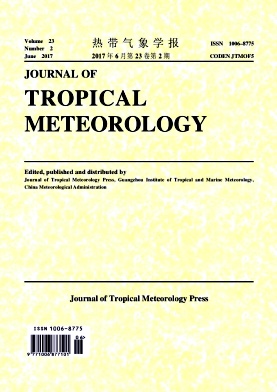ANALYSIS OF “BIMODAL PATTERN” STORM ACTIVITY CHARACTERISTICS OF THE BAY OF BENGAL
doi: 10.16555/j.1006-8775.2017.02.007
- Rev Recd Date: 2017-04-13
Abstract: Storms that occur at the Bay of Bengal (BoB) are of a bimodal pattern, which is different from that of the other sea areas. By using the NCEP, SST and JTWC data, the causes of the bimodal pattern storm activity of the BoB are diagnosed and analyzed in this paper. The result shows that the seasonal variation of general atmosphere circulation in East Asia has a regulating and controlling impact on the BoB storm activity, and the “bimodal period” of the storm activity corresponds exactly to the seasonal conversion period of atmospheric circulation. The minor wind speed of shear spring and autumn contributed to the storm, which was a crucial factor for the generation and occurrence of the “bimodal pattern” storm activity in the BoB. The analysis on sea surface temperature (SST) shows that the SSTs of all the year around in the BoB area meet the conditions required for the generation of tropical cyclones (TCs). However, the SSTs in the central area of the bay are higher than that of the surrounding areas in spring and autumn, which facilitates the occurrence of a “two-peak” storm activity pattern. The genesis potential index (GPI) quantifies and reflects the environmental conditions for the generation of the BoB storms. For GPI, the intense low-level vortex disturbance in the troposphere and high-humidity atmosphere are the sufficient conditions for storms, while large maximum wind velocity of the ground vortex radius and small vertical wind shear are the necessary conditions of storms.
| Citation: | DUAN Xu, DUAN Wei, LIN Zhi-qiang. ANALYSIS OF “BIMODAL PATTERN” STORM ACTIVITY CHARACTERISTICS OF THE BAY OF BENGAL [J]. Journal of Tropical Meteorology, 2017, 23(2): 191-201, https://doi.org/10.16555/j.1006-8775.2017.02.007 |

















 粤公网安备 4401069904700002号
粤公网安备 4401069904700002号
 DownLoad:
DownLoad: